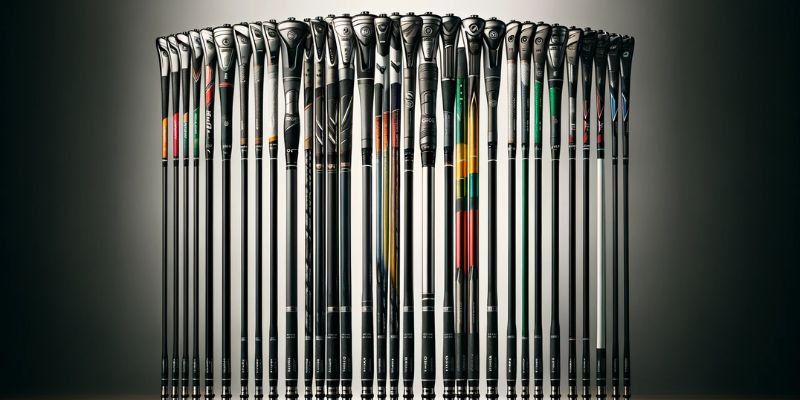Golf Driver Shaft Material plays a pivotal role in the performance and feel of your golf driver, influencing everything from the swing speed to the trajectory of your ball.
Understanding the characteristics of different shaft materials can help you optimize your game by selecting the shaft that best suits your style and strength.
Comparing Graphite vs Steel Shafts
The two primary materials used in golf driver shafts are graphite and steel, each offering distinct advantages depending on your needs and abilities.
Graphite Shafts:
Lightweight:
Graphite shafts are significantly lighter than steel, reducing the overall weight of the club and potentially increasing swing speed.
Shock Absorption:
These shafts are better at absorbing vibrations, providing a more comfortable feel, especially for players with joint concerns.
Variety of Flex Options:
Graphite allows for a greater range of flex options, which can be tailored to suit swing speeds and styles.
Steel Shafts:
Durability and Consistency:
Steel shafts are generally more durable and offer a more consistent performance.
Feedback:
They provide better feedback on shots, which can be valuable for improving your game.
Cost-Effective:
Steel is typically less expensive than graphite and can be a good choice for beginners and budget-conscious players.
How Shaft Choice Affects Swing
The material of your golf driver shaft can significantly affect your swing due to differences in weight and flexibility.
Speed and Flexibility:
Graphite shafts are usually chosen by players looking for speed and a whip-like action, beneficial for those with slower swing speeds.
Stability and Control:
Steel shafts offer more weight, which can lead to better control and stability, ideal for players with a faster swing who can handle the extra heft.
Best Shafts for Speed and Control
Selecting the right shaft is crucial for finding the perfect balance between speed and control. Here are some considerations:
For Speed:
Lighter graphite shafts are typically the best choice for increasing speed as they allow for a quicker swing pace without the extra exertion.
For Control:
Heavier steel shafts might be the better option if you’re looking for more control and precision in your drive.
By understanding the nuances of Golf Driver Shaft Material, you can make an informed choice that not only complements your natural playstyle but also enhances your overall game performance, ensuring that each drive is as powerful and accurate as possible.
Does the shaft material really make a difference in how well I play?
Yes, the material of your golf driver shaft that sits in your golf bag can dramatically affect your play. Graphite shafts can enhance swing speed and distance, while steel shafts can improve control and feedback.
How do I choose between graphite and steel shafts?
Choosing between graphite and steel shafts depends on your personal preference, playing style, and physical strength. Golfers looking for speed and lighter weight might prefer graphite, whereas those in need of stability and control might opt for steel.
Can I switch shaft materials if I’m not satisfied with my current one?
Absolutely, many golfers experiment with different shaft materials before settling on what best suits their game. It’s advisable to consult with a professional fitter to ensure you make a choice that complements your swing dynamics.

